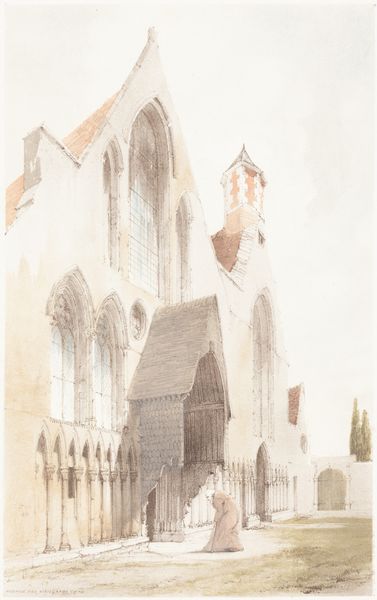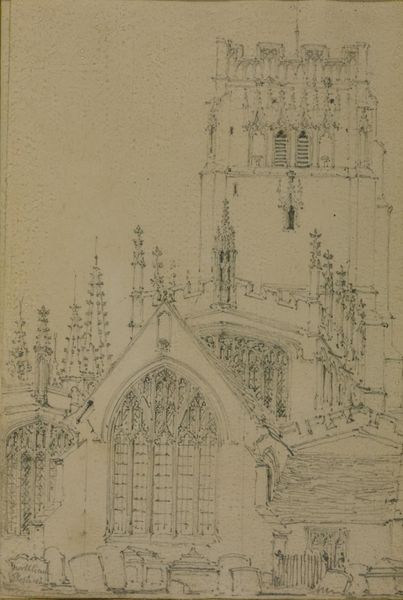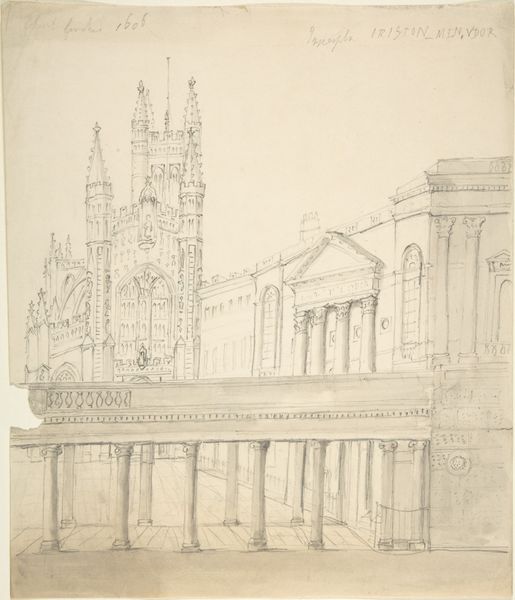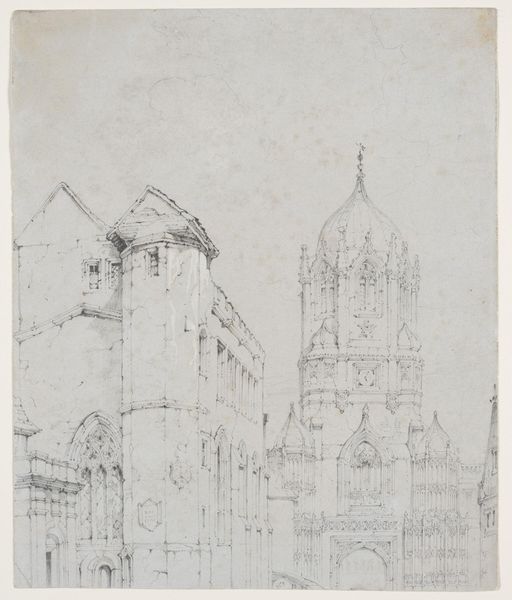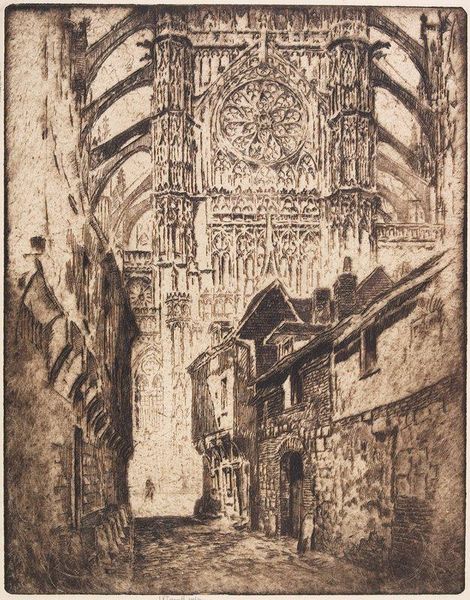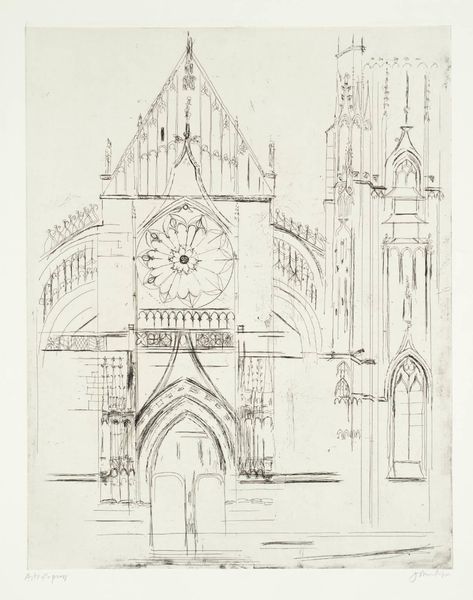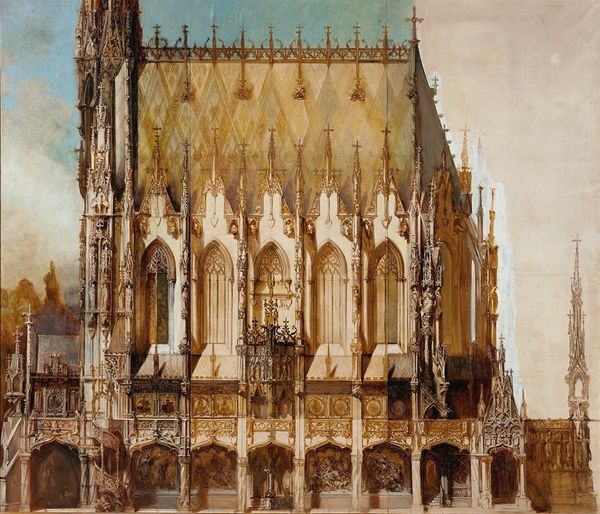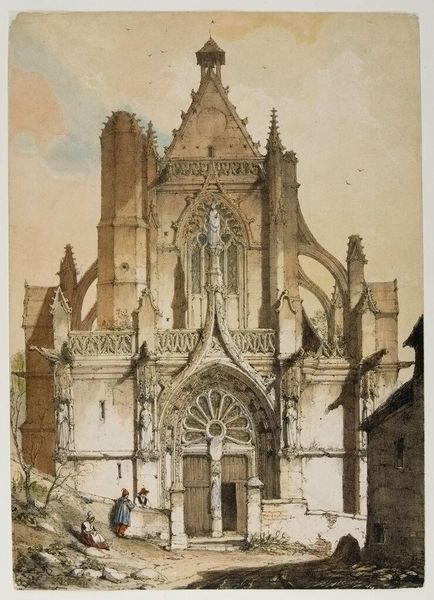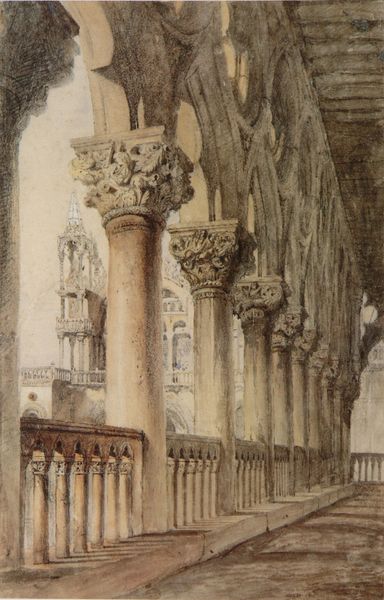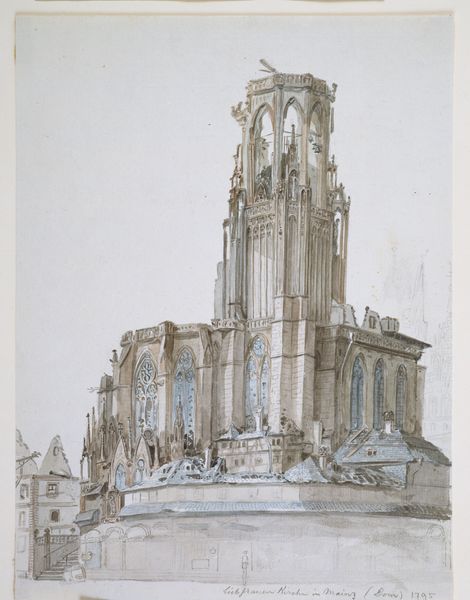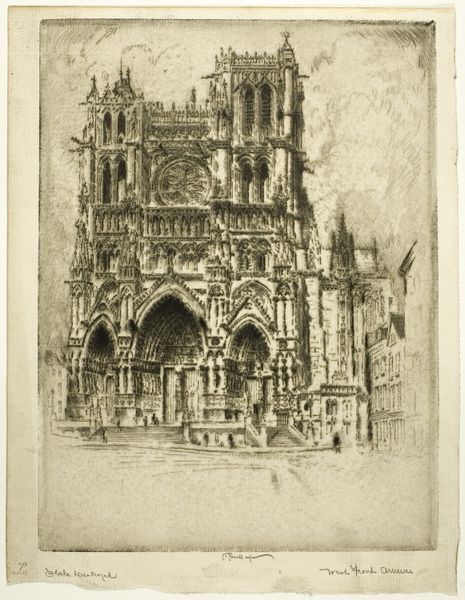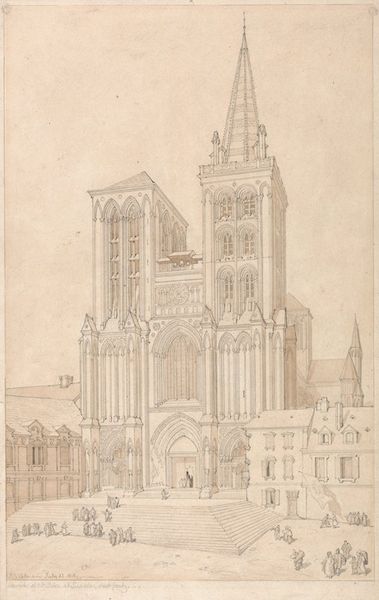
photography, gelatin-silver-print, architecture
#
landscape
#
charcoal drawing
#
photography
#
romanticism
#
arch
#
gelatin-silver-print
#
architecture
Copyright: Public domain
Editor: Here we have John Ruskin's "Part of Santa Maria della Spina Pisa," taken in 1847. It’s a gelatin silver print, giving the architecture a wonderfully warm, almost sepia tone. The level of detail he captured is just astonishing. How would you interpret the impact of these stylistic choices? Curator: The formal qualities are immediately striking. Note the sharp delineation of line that the photographic medium permits, offering a structural clarity to the Gothic ornamentation. Observe also how the tonal gradations articulate depth, creating a measured recession into the picture plane. Consider, as well, how the composition foregrounds the architectural facade; this strategic framing underscores the building's intrinsic geometric order and the interplay of solids and voids. Editor: So, it’s about isolating the form of the architecture itself? Curator: Precisely. We might also consider the surface qualities: the texture, for instance. What visual effect does the rendering of the stone produce? Editor: It feels very precise but also timeless, as though the picture captured it from that moment and the distant past, as if I could be there. Curator: Precisely. The meticulous recording and calculated placement work to emphasize the architectural forms. Ruskin sought not just to document, but to reveal the underlying logic, beauty, and precision inherent in its design. Editor: It's like the photograph is itself acting like a building! I've certainly noticed aspects I never would have given my untrained eyes. Thanks! Curator: It’s through the sustained analysis of structure and form that we achieve greater clarity. I, as well, will be reflecting on how I may introduce light further into such analyses.
Comments
No comments
Be the first to comment and join the conversation on the ultimate creative platform.
